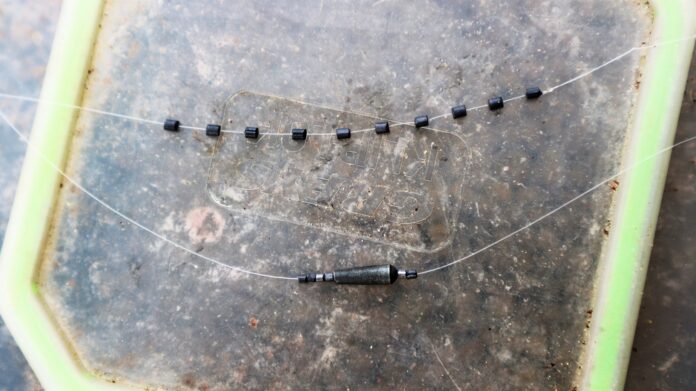A CUT ABOVE


Split shot are an important component of many rigs, so I don’t make do with just any old product. Having experienced annoying problems with shot slipping, damaging line, and not hanging centrally enough, I am now very picky regarding the product I use. In my opinion Anchor Double Cut is by far the best available, due to that ingenious extra small nick at the back of the main slot. This allows the hard alloy to be closed easily and more centrally, resulting in weights that lock firmly, but without heavily pinching the line and staying easy to move. A small divot in the main cut helps this design to be reopened when finished with, so it can be put back in its container and used many times. This particularly applies to bigger shot sizes, like SSGs, AAAs and BBs, along with the unique SA and AB intermediate gauges Anchor make. Larger shot are used to double lock waggler floats on the line, also for forming bulks for big top and bottom attached river floats.
MARVELLOUS MICROS
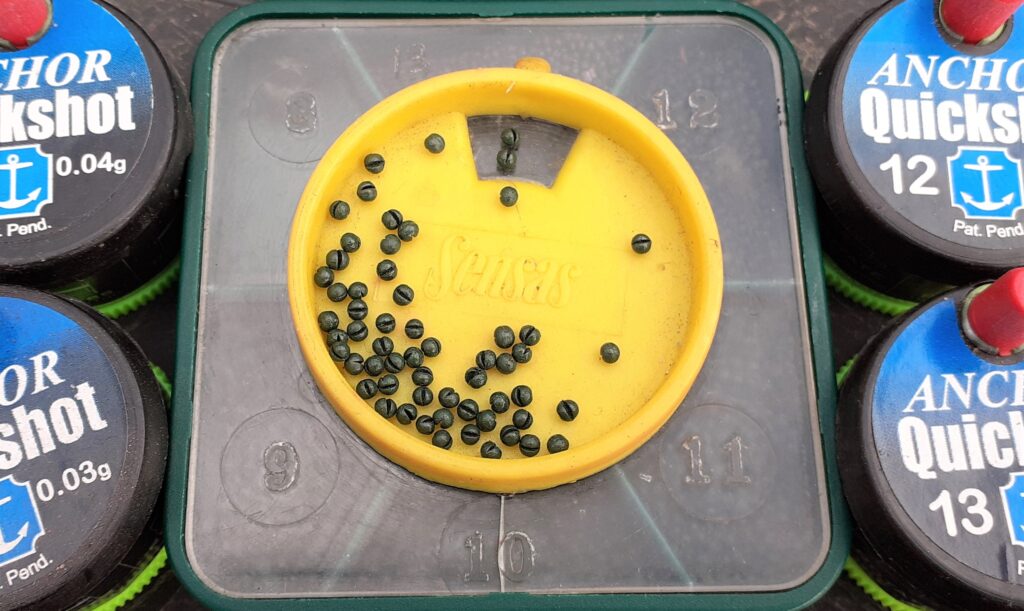

Similar to standard split shot, it took a long time to discover micro versions that worked well for me. Some makes were incredibly hard, to the extent I suffered a few line breaks exactly where the tiny weights had been nipped on. Apart from being too severe, another problem with certain types was being too shiny. This often attracted small fish into attacking the shot, creating false indications on sensitive float tackle. The solution turned out to be a dark green coated version. Apart from camouflaging, the paint layer helped gain a better grip and acted like a cushion on fine lines. I mostly use size 8s, 9s and 10s on running line float rigs, normally as tell-tales or droppers towards the hook. Smaller 11s and 12s are okay for fine-tuning delicate float rigs, but otherwise seldom required. I don’t use micro shot on pole tackle anymore, much preferring similar-sized Stotz weights for that job. The latter are even kinder on fine lines and easier to move.
SUPER STOTZ
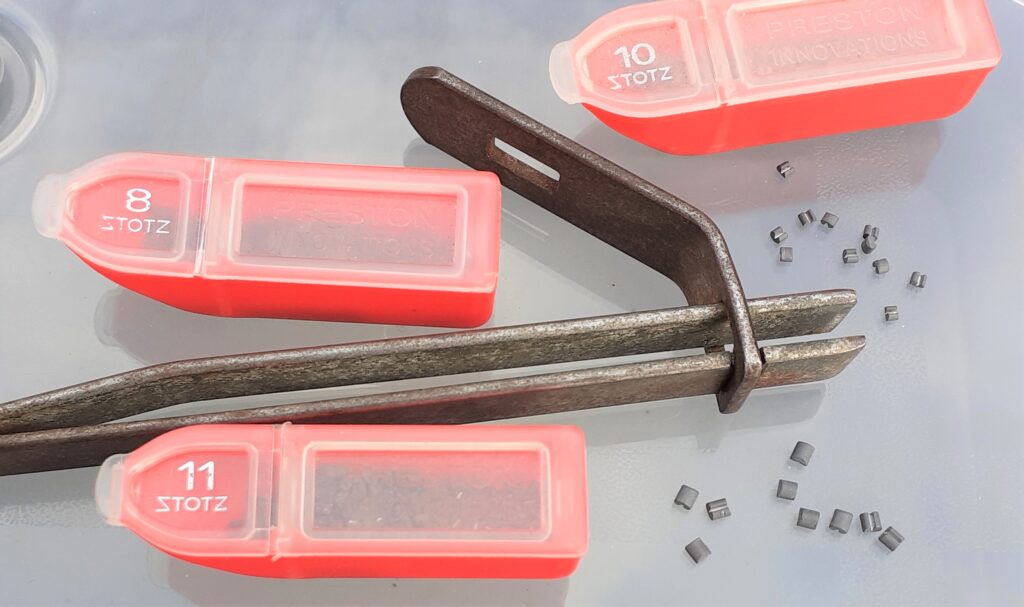

Preston Innovations changed the way many of us fish when they came up with Stotz, which are an elongated version of micro shot, echoing popular 8, 9, 10, 11, 12 and 13 sizes. These tiny hybrids lay somewhere between round micros and much more elongated Continental Styls. In effect they are a half-size alternative of the latter. The most appealing feature is these weights are so much simpler to apply. Once a few have been spilled onto a flat surface, the ones with their slots facing down can be picked up with a pair of pincers and nipped straight onto the line. It’s possible to assemble pole tackles a lot faster with this product, making a tedious job less painful. This has resulted in round micro shot becoming almost redundant for my mainstream pole rigs. Some anglers say not to use Stotz on heavy-duty big-fish pole rigs because they slip, but there are good copies that are coated, which are less prone to moving when applied to thicker mono.
BALL GAMES


Although nowhere as widely used as round split shot, oval or rugby ball-shaped versions are a neat concept. Because they are elongated, these weights hang more centrally on the line than most other designs, handy when forming big bulks, or when stringing out smaller sizes with river floats. Larger rugby ball-shaped shot are more streamlined when grouped together, making big bulks that can be used in combination with floats like chubbers, Avons and loafers. They also work well as link legers. Another interesting usage is employing medium sizes to form slightly strung bulks for bigger stick floats or deep-water pole rigs. Oval shot look neater than round versions when strung out. I’ve also tried these weights as bulks with slider floats, which didn’t work out so well. But where single oval shot do a great job is when used as stoppers. They grip a bigger span of line and are less likely to move when feeders or leger weights buffer up against them.
NEATER BULKS


Grouping big split shot together to form bulks is okay to get out of trouble, but by far the best product to use for this job are olivettes. These weights are streamlined and more compact, creating far less resistance when used on both pole and running line float rigs. Olivettes are mainly used by pole anglers as the main lower-set weights for deep water or to-hand rigs. River anglers have taken to them too, for use with chunky floats like chubbers that take big loadings. Bulk weights help to get the hook bait down fast and stop it from lifting up when the tackle is braked on a tight line in flowing water. They allow tighter control of rigs in deep water too, also when there is strong surface drift or undertow. I’ve tried peg-leg olivettes but couldn’t get on with them, losing quite a few that came adrift. In-line versions are superior in my opinion, but they do require positive anchoring. I either lock them with a thin bristle, or with multiple small shot.
RUNNING FREE
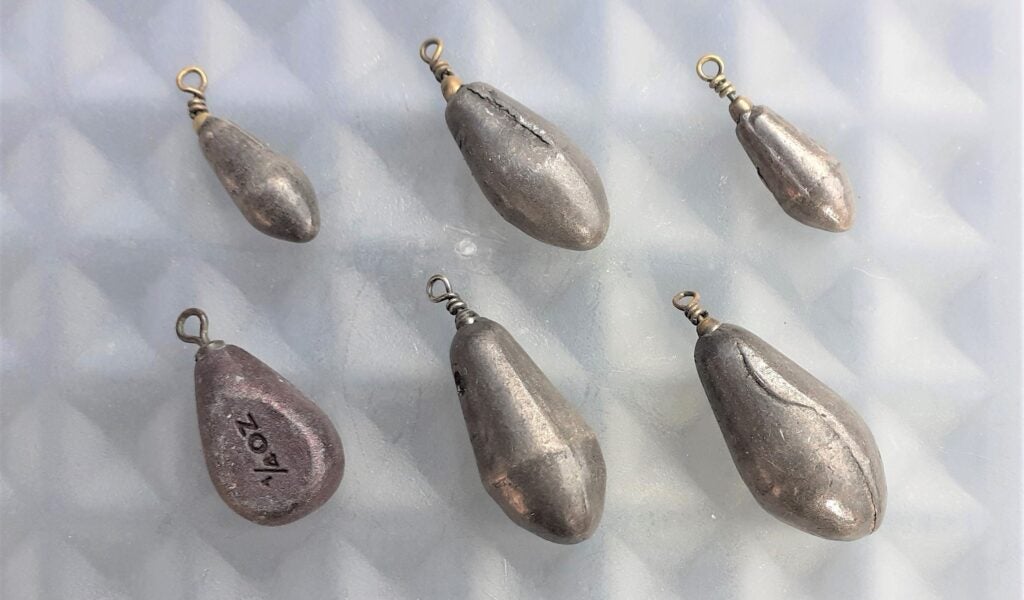

Leger weights are not used by general coarse anglers as much as they once were, mainly because feeder fishing has become so incredibly popular. But even if you are concentrating on feeder tactics, it doesn’t hurt now and then to switch to a straight leger, giving the swim a rest and possibly catching a few bonus fish. Having a bomb rod set up when float fishing on rivers is always a good idea too. I have lost count of the times when bites dried up on float gear, only to find a stationary bait brought them straight back, especially when cast to the tail end of a swim. Free running legers also work well on commercial fisheries in winter, casting around to discover where the carp are holed up. This is better than guessing and feeding the wrong places. A few exploratory casts with a bomb can quickly result in a bite, or at least an indication on the line. Once this happens the swim can be built up with loose fed freebies, or with a swimfeeder.
ALL CHANGE
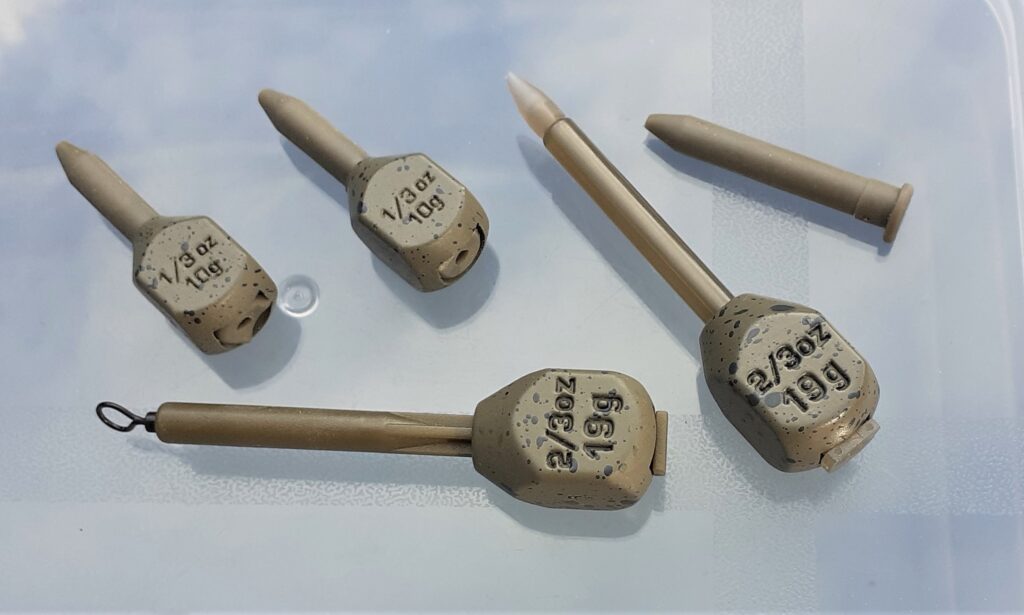

Staying with commercials, the ever-popular method, pellet and hybrid in-line feeder revolution has brought about a new type of leger weight: squared-off versions that can be slid onto similar tubes modern feeders are supplied on. Just like with conventional feeder tactics, this allows swims to be rested, often finding bonus fish that have backed away from the main feed area. Tubed and square-shaped leger weights have another bonus. They don’t roll as easily as traditional Arlesey bombs, holding bottom better when fished tight to features with sloping terrain. These weights hold steadier in flowing water too, plus they work well in PVA bags, loaded with simple rigs and freebies. Another plus point with in-line leger set-ups is they can be combined with short hook lengths, when looking for positive takes using hair-rigged or banded baits. They work particularly well with hard pellets, wafters, mini boilies, sweetcorn and cubes of meat.
DEPTH FINDERS


Many new plummet designs are over-heavy in my opinion. I don’t see any need for a weighty depth finder on a light pole rig. This makes thin pole elastic droop out awkwardly when trying to map out bottom terrain. A big weight will also sink deep into any soft silt on the bottom, giving a false reading. Heavy might work in deep or flowing water, but generally I prefer lightweight plummets with stems, which can be attached at their top end, to allow for any soft silt or bottom debris. I switch to something even lighter for gauging depths with waggler tackle, burying the hook’s bend in a small piece of tungsten putty. Moulded tungsten plummets are great for finding gaps when there’s underwater weed. If you hide the hook point, running line or pole tackle won’t snag up as you drag the rig around to work out a clear spot. I think it’s a good idea to use smaller plummets in shallow swims too, where they are less likely to spook any resident fish.
STRUNG v BULKED


We all have those unexpected learning curve moments that heavily influence how we fish for a long time afterwards. I had such an experience when I went fishing with a top French International, back in my early match days on the River Lea. I was using olivette bulks to get through the bleak, also because the water was fairly deep. But this guy insisted spread bulks of small shot were better. I quickly noticed his pole float was moving differently to mine and he was certainly catching a lot faster than I was. He explained that a strung bulk picked up any slight undercurrent better, but even more importantly made the hook bait settle more naturally as it neared the bottom. I’ve used the system ever since, and even with quite big 0.75g and 1g pole floats it works wonders, to the extent I only tend to use olivettes with floats well over a gram now. Spread bulks are time consuming to form, but worth the extra effort because they catch lots more.
IN RESERVE
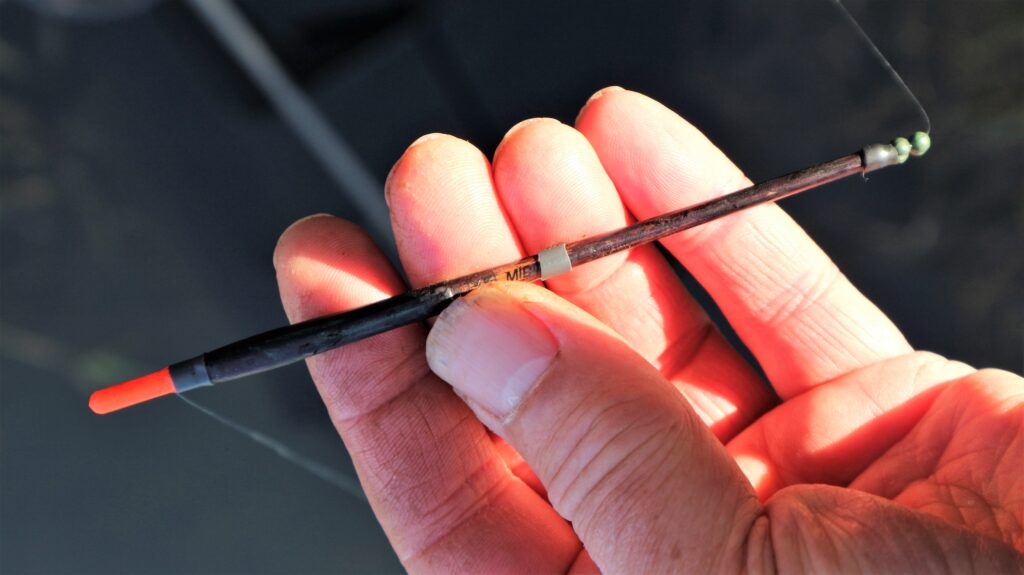

Sometimes floats take more shot than you need, so rather than over-complicating rigs, you must find somewhere to park them. This problem occurs a lot with small sticks. Even mini sticks often take several number 4s, which when fishing small river swims with minimal depth can be too much. In shallow runs just over a foot deep, I might only want a couple of number 8s or 10s spread out below the float. I’ve found the best place for any other weights, which are required to dot the float down properly, is directly underneath its stem. With waggler tackle it’s different. I use most of the float’s weight carrying capacity as locking shot, but I do like to have a few smaller shot in reserve. I find the best place to store these is just above a small swivel, which I use to join a long 15-20inch hook length to the main line. I normally have two spread micros on the hook length, with spare number 8s or 10s by the swivel, which can be further spaced out if required.
WAGGLER LOCKERS
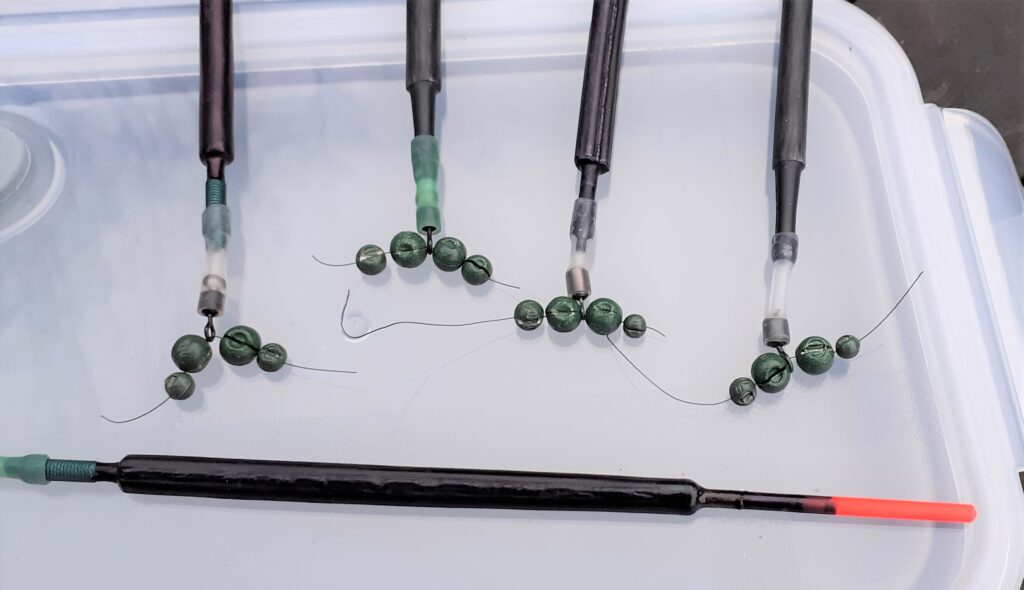

When locking conventional peacock wagglers on the line, particularly my favourite insert designs, I like to use double shot on either side of a swivel float adaptor. I position bigger ones against the float, and smaller sizes outside. This makes a nice balance and helps to avoid slippage. I know some anglers prefer using loaded wagglers, but I find these dive too deeply. Having several locking shot causes resistance as the rig hits the water, so the float sets itself quickly and the tackle starts working almost straight away. With most of my waggler set-ups the majority of the float’s weight carrying capacity is fixed underneath it, with only a few micro shot down the rig. Notice once again, as with micros, I prefer dull green coated split shot. These grip the line better. I don’t like shiny silver weights anyway, or anything similar that might catch the light and make fish cautious. I use waggler adaptors because they collapse on the strike, reducing resistance.
STORAGE SOLUTIONS
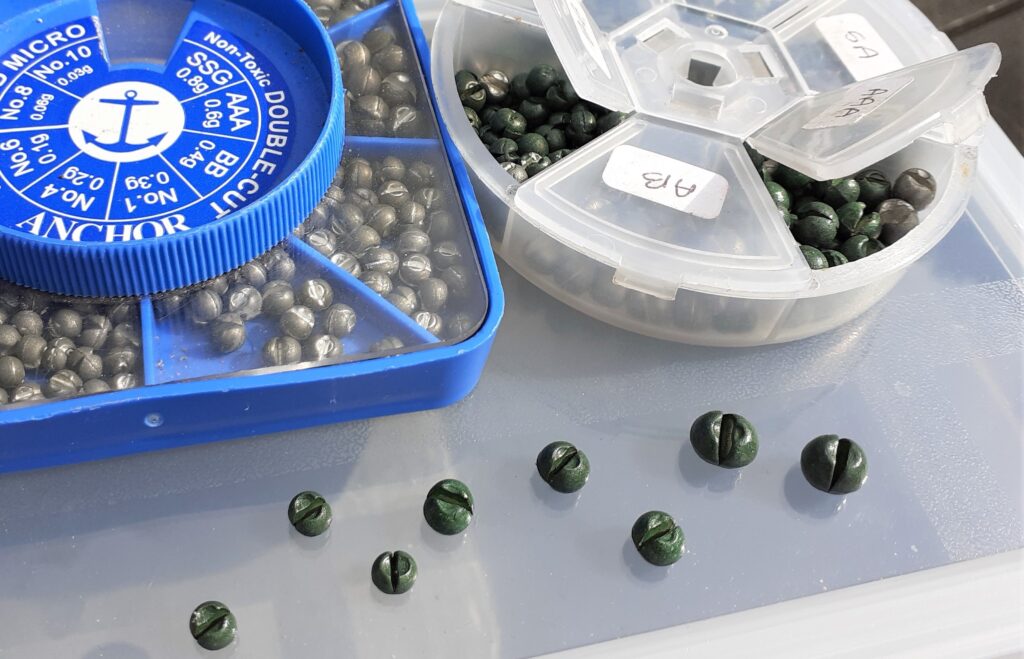

I’m not keen on the multi-compartment boxes split shot are supplied in, because most require two hands to get at the contents. I switch my weights over to flip-top containers, like the Plano one in the photograph. This sits perfectly in a seat box side drawer and I can get at what I want one-handed, so I don’t have to put any tackle down that I’m working on. I keep weights like bombs in small rectangular rig bits boxes like carp anglers use, and again these fit okay in seat box drawers or trays. The same applies to plummets and tungsten putty. I don’t carry spare olivettes around with me, storing these in multi-division boxes in my tackle room. Stotz weights stay in the well-designed containers they are supplied in, because these dispense their contents perfectly and don’t take up much space where other vital stuff is kept. As for weight-related tools, I use Styl pincers for Stotz and round micros, along with pointed nose pliers for bigger shot.










